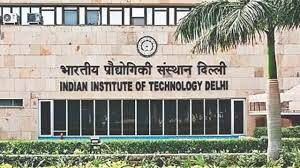TOP RAIN FORESTS OF WORLD
The world's rainforests are incredibly diverse and vital ecosystems that support a wide range of plant and animal species. While it is challenging to rank rainforests in terms of their importance or beauty, here are some of the top rainforests in the world known for their significance in terms of size, biodiversity, and ecological value:
Amazon Rainforest - Located in South America, the Amazon Rainforest is the largest tropical rainforest on Earth, spanning several countries, including Brazil, Peru, Colombia, and others. It is home to an unparalleled diversity of plant and animal species, making it a critical region for global biodiversity.

Congo Basin - Situated in Central Africa, the Congo Basin is the world's second-largest tropical rainforest. It covers a vast area across multiple countries, including the Democratic Republic of Congo, Cameroon, and Gabon. This rainforest is renowned for its unique species, such as gorillas, chimpanzees, and forest elephants.
Southeast Asian Rainforests - This region encompasses rainforests in countries like Indonesia, Malaysia, Borneo, and Sumatra. It is one of the most biologically diverse areas on the planet, featuring iconic species such as orangutans, tigers, and various bird species. The Taman Negara National Park in Malaysia and Gunung Leuser National Park in Indonesia are well-known rainforest areas in this region.
Daintree Rainforest - Located in Queensland, Australia, the Daintree Rainforest is one of the oldest rainforests in the world, dating back over 135 million years. It is a UNESCO World Heritage site and is renowned for its rich biodiversity, including unique plants and animals like the southern cassowary and the endangered tree kangaroo.
Monteverde Cloud Forest Reserve - Situated in Costa Rica, the Monteverde Cloud Forest Reserve is a famous and biologically diverse rainforest. Its high altitude and frequent cloud cover create a unique habitat for countless species of plants, birds, and mammals. It is particularly known for its extensive network of canopy bridges that allow visitors to explore the forest from above.
Pacific Northwest Rainforest - Stretching along the coastal regions of the United States (primarily Oregon and Washington) and Canada (British Columbia), the Pacific Northwest Rainforest is characterized by its lush vegetation and towering evergreen trees, including Sitka spruce and Western red cedar. It is home to various species of bears, salmon, and the elusive coastal gray wolves.
These are just a few examples of the world's remarkable rainforests. Each rainforest has its own unique characteristics and contributes to the overall health of our planet by providing vital ecosystem services, regulating climate, and supporting an astonishing array of life forms.














